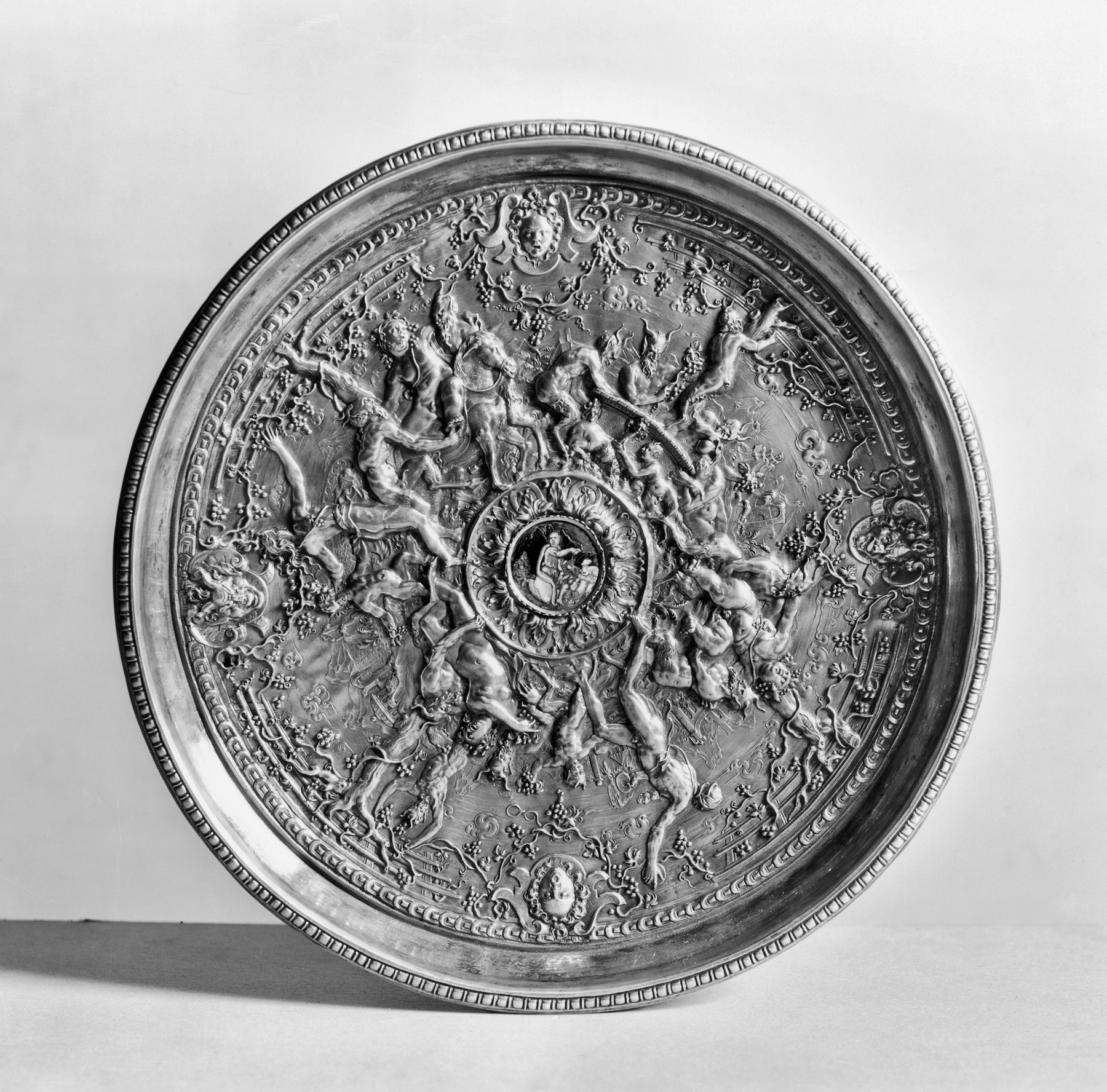"Tazza" with St. John the Baptist and a Bacchanalia
(18th and 19th Centuries )
The "tazza" bowl is decorated in high relief in the Italian late 16th-century style with bacchanalia scenes (showing a procession of followers of Bacchus, the Roman wine god). Scholars remain divided as to whether the bowl is genuine or a forgery. In the center of the "tazza" is a 16th-century Limoges enamel showing St. John the Baptist with his lamb. The foot of the tazza appears to be a later addition. When Henry Walters acquired this piece, he thought it was made by the Nuremberg goldsmith Wenzel Jamnitzer (ca. 1507-1585).
Provenance
Provenance (from the French provenir, 'to come from/forth') is the chronology of the ownership, custody, or location of a historical object. Learn more about provenance at the Walters.
Joseph Brummer, New York [date and mode of acquisition unknown]; Henry Walters, Baltimore, 1931, by purchase; Walters Art Museum, 1931, by bequest.
Conservation
| Date | Description | Narrative |
|---|---|---|
| 9/9/1963 | Treatment | cleaned; coated; loss compensation |
Geographies
Italy (Place of Origin)
Measurements
Diam: 10 7/8 in. (27.6 cm)
Credit Line
Acquired by Henry Walters, 1931
Location in Museum
Not on view
Accession Number
In libraries, galleries, museums, and archives, an accession number is a unique identifier assigned to each object in the collection.
In libraries, galleries, museums, and archives, an accession number is a unique identifier assigned to each object in the collection.
57.682


